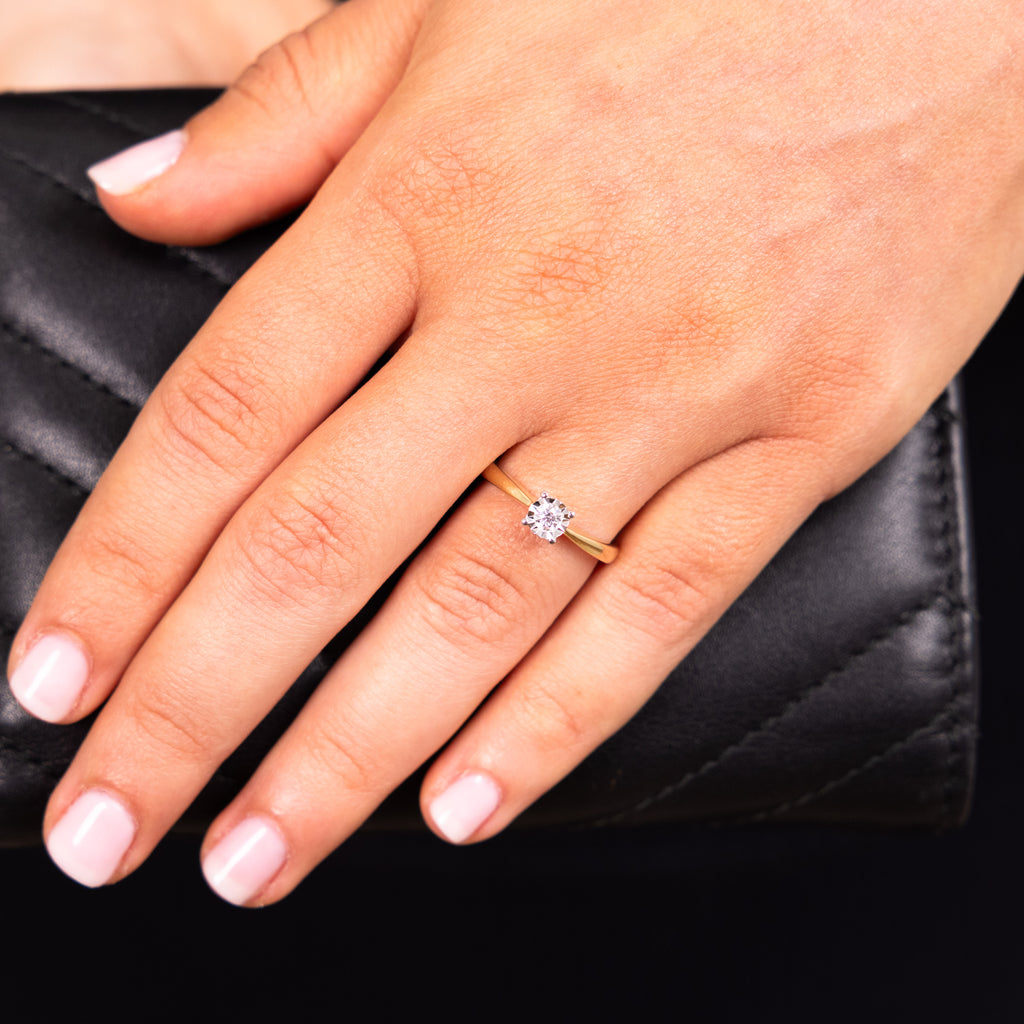
When selecting an engagement ring or a special gift, lab diamond rings have become an increasingly popular choice. These ethically sourced gemstones offer the same brilliance and durability as mined diamonds but without the environmental and ethical concerns. One of the most important aspects of a diamond ring is the setting, and the claw setting (also known as prong setting) remains a classic favorite. This guide delves into everything you need to know about lab diamond rings and the intricacies of claw settings to help you make an informed decision.
Understanding Lab Diamonds
Lab-grown diamonds are created using advanced technological processes that replicate the conditions under which natural diamonds form. These diamonds are chemically, physically, and optically identical to mined diamonds. They offer several benefits, including:
Ethical Sourcing: No conflict or human rights issues are associated with their production.
Environmental Impact: Significantly reduced compared to traditional mining.
Cost Efficiency: Often more affordable than mined diamonds, lab diamond rings claws, allowing for larger or higher-quality stones within the same budget.
Benefits of Lab Diamond Rings
Choosing a lab diamond ring offers numerous advantages:
- Quality and Purity: Lab diamonds often exhibit fewer inclusions and impurities.
- Variety: They come in a range of sizes and shapes, offering more flexibility for custom designs.
- Sustainability: Supporting eco-friendly practices and reducing carbon footprints.
- Value: Higher quality for the same price, making it a smart financial choice.
The Importance of Claw Settings
The setting of a diamond ring not only secures the stone but also enhances its beauty and brilliance. The claw setting is one of the most popular choices due to its ability to hold the diamond securely while maximizing light exposure to the stone.
Types of Claw Settings
- Four-Prong Setting: Offers a minimalist look and allows more light to enter the diamond, enhancing its sparkle.
- Six-Prong Setting: Provides extra security for the diamond and is often used for larger stones.
- Double-Claw Setting: Features two prongs at each corner for a unique look and additional security.
- V-Prong Setting: Designed to protect the corners of fancy-shaped diamonds such as princess or marquise cuts.
Advantages of Claw Settings
- Security: Claws hold the diamond firmly in place, reducing the risk of loss.
- Exposure: Allows maximum light to pass through the diamond, increasing its brilliance.
- Elegance: Offers a classic, timeless look that complements any diamond shape.
Choosing the Right Claw Setting for Your Lab Diamond Ring
Selecting the perfect claw setting involves considering the diamond’s shape, size, and the wearer’s lifestyle. Here are some tips to guide you:
Shape of the Diamond
- Round Diamonds: Typically look stunning in both four and six-prong settings.
- Princess Cut: V-prong settings are ideal for protecting the sharp corners.
- Oval, Pear, and Marquise: Benefit from settings that protect the pointed ends, often utilizing a combination of prongs and a bezel for added security.
Size of the Diamond
- Smaller Diamonds: Four-prong settings can make smaller diamonds appear larger by exposing more of the stone.
- Larger Diamonds: Six-prong settings offer better security for heavier stones.
Lifestyle Considerations
- Active Lifestyles: Double-claw or six-prong settings provide extra security for those who lead active lives.
- Minimalist Preferences: Four-prong settings offer a delicate and refined look for those who prefer simplicity.
Customizing Your Lab Diamond Ring
Personalizing your lab diamond ring can make it even more special. Consider these customization options:
Band Material
- Platinum: Durable and hypoallergenic, ideal for daily wear.
- Gold: Available in yellow, white, and rose gold, each offering a distinct aesthetic.
- Palladium: A rare metal that offers a sleek look similar to platinum but at a lower cost.
Accent Stones
Adding smaller diamonds or gemstones to the band can enhance the overall look of the ring. Popular choices include:
- Pavé Setting: Small diamonds set closely together to create a continuous sparkle.
- Channel Setting: Diamonds set in a channel within the band for a sleek and secure look.
- Bezel Setting: Gemstones are encircled by metal, offering additional protection and a modern appearance.
Caring for Your Lab Diamond Ring
To keep your lab diamonds ring looking its best, regular care and maintenance are essential. Follow these tips:
- Regular Cleaning: Use a mild soap solution and a soft brush to clean the diamond and setting.
- Professional Check-Ups: Have your ring inspected by a jeweler annually to ensure the prongs are secure.
- Avoid Harsh Chemicals: Remove your ring when using household cleaners or engaging in activities that involve chemicals.
- Safe Storage: Store your ring in a soft-lined jewelry box to prevent scratches and damage.
Conclusion
Lab diamond rings with claw settings represent the perfect blend of modern innovation and timeless elegance. By choosing a lab-grown diamond, you are making an eco-friendly, ethical, and cost-effective choice without compromising on quality or beauty. The claw setting, with its versatile and secure design, ensures that your diamond will shine brilliantly for years to come. Whether you’re selecting an engagement ring or a special piece of jewelry, understanding these elements will help you make an informed and satisfying decision.

